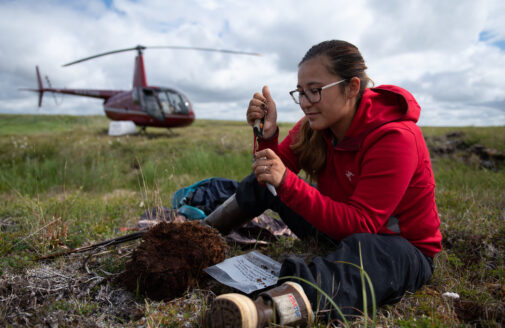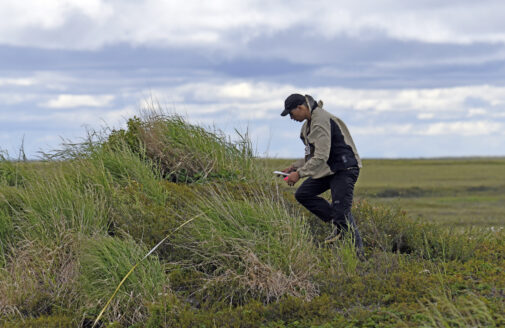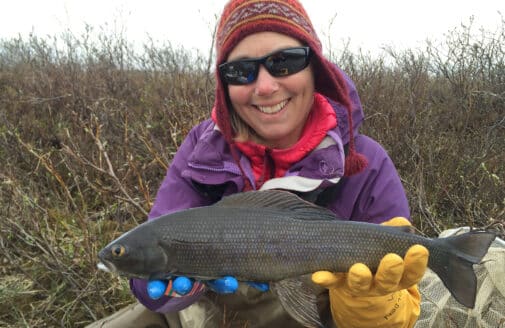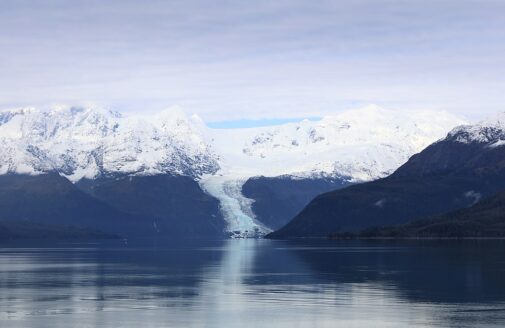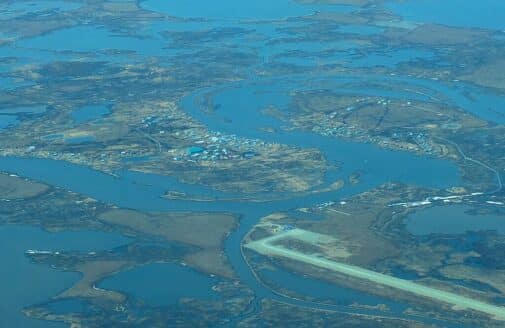After battle against cold, Polaris Student, Esmeralda Torres Martínez, embraces her love of Arctic fieldwork
Torres Martínez poses in front of a segment of permafrost core.
photo by Noah Henkenius
I am a woman that lives for adventure, mud, and heat. The Caribbean sunshine, warmth, and humidity of my island, Boriké, hug me every single day. That’s why many people find it strange that in the summer of 2022 I ended up on the other side of the world from my Carribean Island home, willingly experiencing freezing temperatures.
So, here’s my story: I grew up in Puerto Rico, a couple of Caribbean islands that are very vulnerable to the effects of climate change. The burning of fossil fuels and the destruction of forests are causing Arctic ice to melt which, in addition to affecting the climate of the planet, is affecting Boriké. Rising sea levels, more frequent and stronger hurricanes, and constant landslides are some of the dangers I am already experiencing on my island.
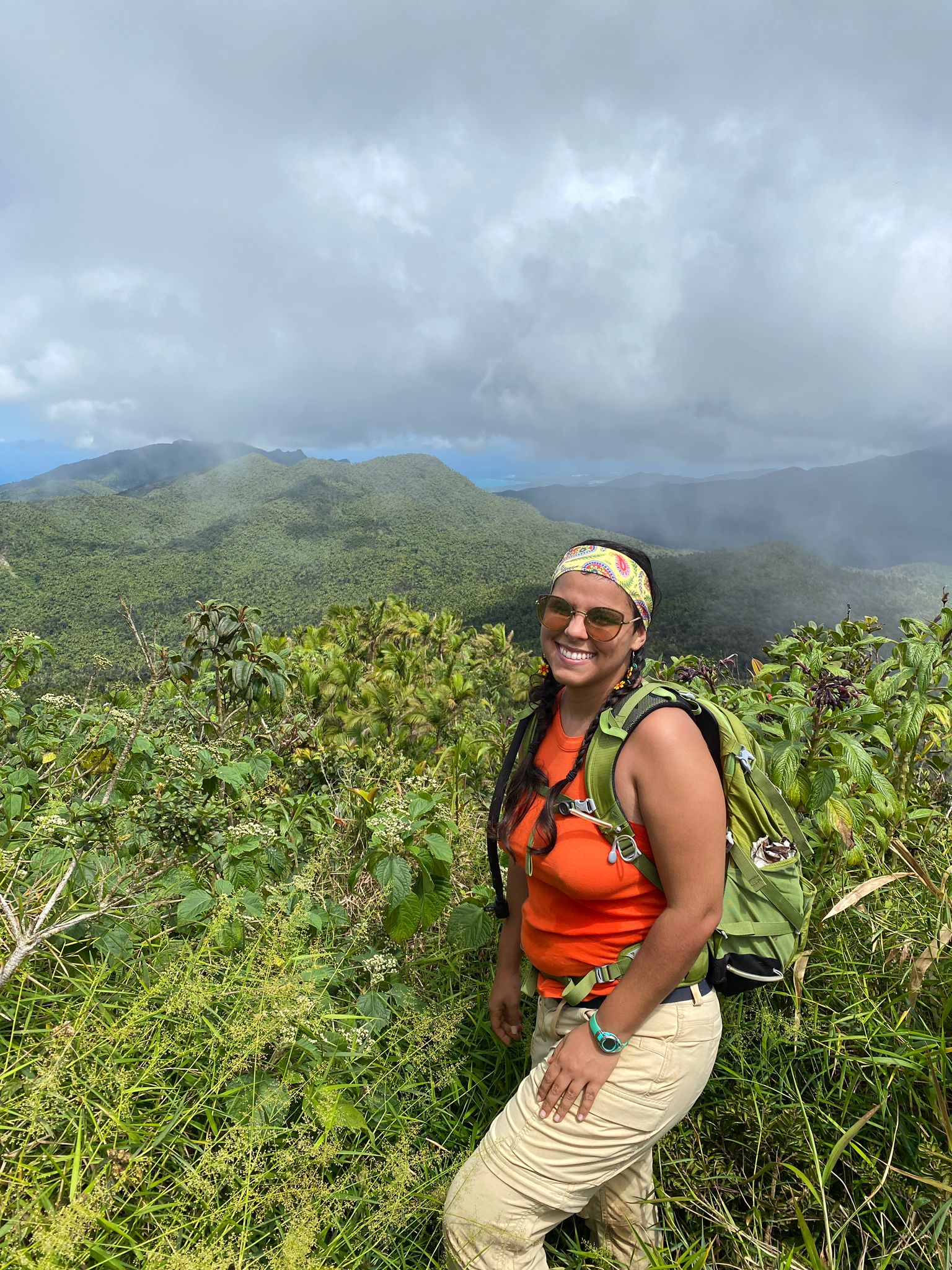
Esmeralda Torres Martínez hiking in her island home.
photo courtesy of Esmeralda Torres Martínez
Although I do a lot of environmental work there, a few years ago I decided to visit the Arctic to fully understand how climate change is also affecting other types of ecosystems. Because climate change is a global phenomenon, I sought to learn how to properly support and collaborate with other at-risk communities outside of the boundaries of my islands, even if that meant stepping outside my comfort zone in another part of the world.
The problem was: I’ve never lived in polar temperatures. I’ve hiked hundreds of miles of coastal and humid tropical forests to conduct research, yet visualizing myself as an Arctic scientist in an environment so different was nearly impossible.
But as I said before, I am a woman that lives for adventure, so if I was going to experience a new environment I was going to get the full experience.
So that summer I packed up my giant backpack and joined eight other young researchers for Woodwell Climate’s Polaris Project—a two-week long research trip in the Yukon Kuskokwim Delta of Alaska. Polaris gives students the chance to design their own studies and gain experience conducting Arctic research. It was with Polaris that my battle against the cold began.
I spent my time in remote areas of the Tundra, a carbon-rich ecosystem lacking mountains and trees, yet full of life and history. I had to live in a tent to conduct my research on how the groundwater system is changing. My usual day in the Arctic looked like lots of hiking in the mud, carrying pipes and drills in my backpack, wearing mosquito nets, and taking water and soil samples in temperatures as low as 48 degrees Fahrenheit. Although 48 degrees might not be cold for many folks on Turtle Island—the original name for North America—as someone from the Caribbean, anything below 70 degrees is already too cold to handle.
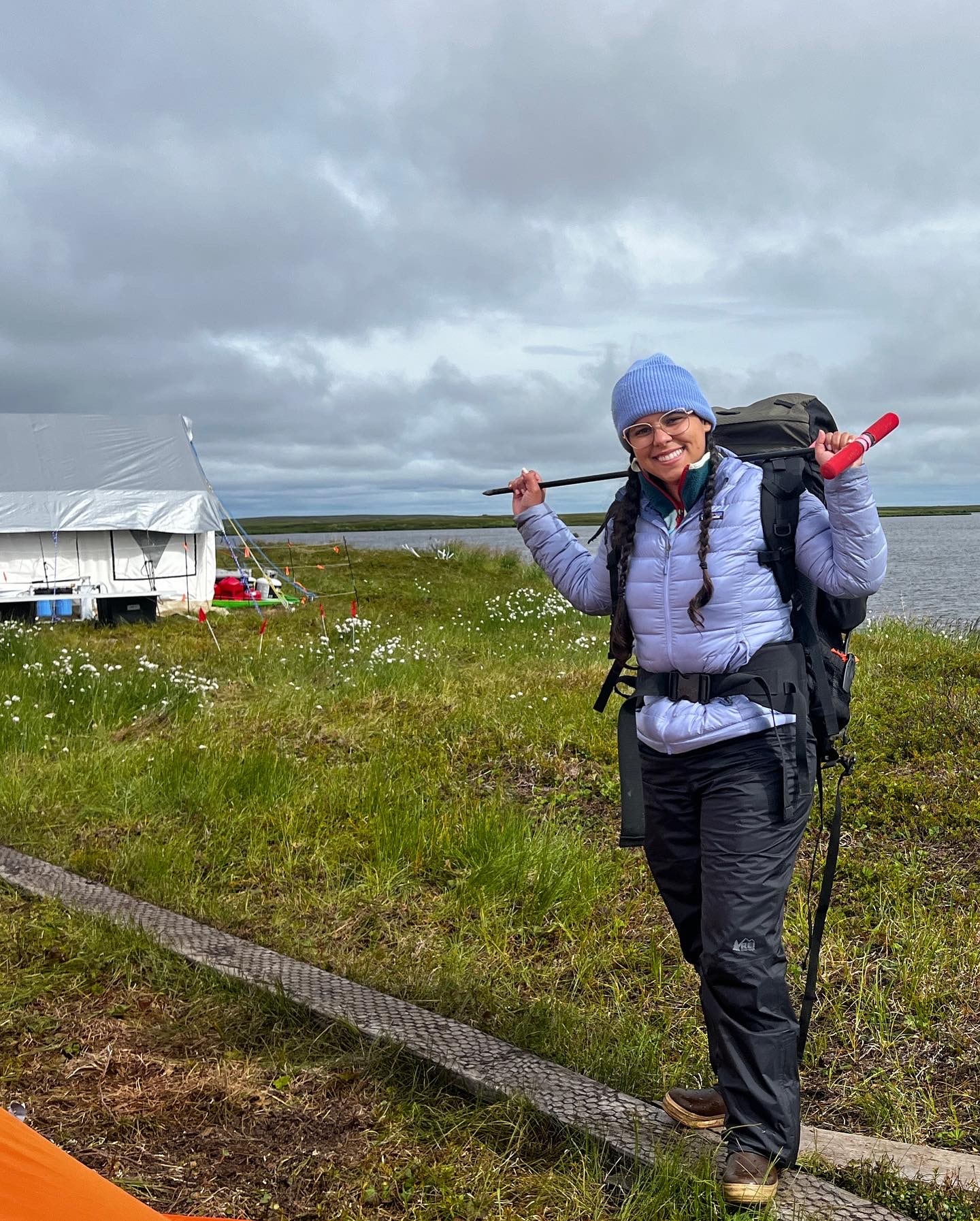
Torres Martínez walks the Arctic tundra during her Polaris experience.
photo courtesy of Esmeralda Torres Martínez
Add onto that, the rainy days, the lack of access to communications, internet, electricity, and water service. Needless to say, my first experience with cold was an intense one.
But you know what? I loved it.
I loved working with new friends, colleagues, and mentors. I loved getting to know the Yup’ik and Cup’ik communities guarding these lands. I loved doing science projects that served a common good.
I loved fieldwork in the cold.
However, when I went back home and felt that rich Caribbean sunshine and heat again, I began questioning myself.
How could I have enjoyed working in the cold? Could I really be a scientist in the Arctic even though I didn’t grow up in the Arctic? My Polaris experience lasted only two weeks, and they were the most challenging two weeks of my entire career. Could I endure weeks, months, or even years in these conditions?
Would I let the cold win this battle?
Well, I would have to face the cold one more time either way. Polaris students present the results of their research each year at the American Geophysical Union conference in December. To give my research presentation, I had to travel to Chicago—in the middle of winter.
Have you ever felt the chilling winds of Chicago? It’s known as the windy city for crying out loud! I guess it was time for me to get back to the battlefield.
I packed all my coats, got on a plane, touched down in traditional Potawatomi lands, and tried not to freeze to death.
The wind and snow was strong the day I had to present my research. It was actually my first time experiencing snow falling from the sky, so I bundled up warmly. But as I was walking to the convention center, going over in my mind the speech I had to give, I felt the most chilling cold I had ever experienced in my life. When I looked down at my feet, I realized that I had packed the wrong shoes! In thin flats, my feet were totally exposed.
This was the moment you might conclude that the cold finally beat me. Yet, when I looked back down at my exposed feet, I just couldn’t stop laughing.
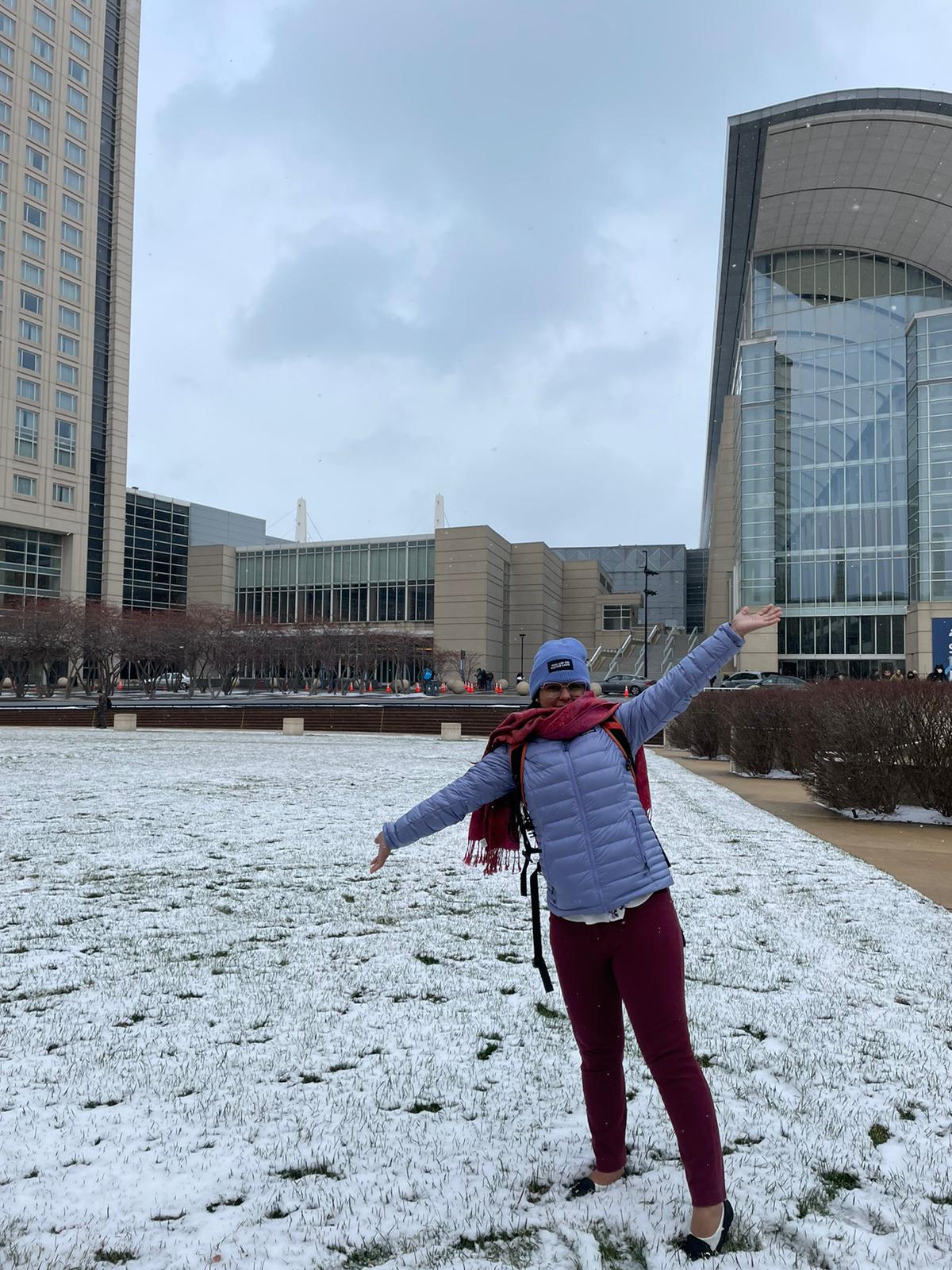
Torres Martínez at the AGU convention (notice the shoes!).
photo courtesy of Esmeralda Torres Martínez
After so much effort to “win the battle”, at that very moment I realized the battle doesn’t exist. There is no battle against the cold.
Living in the cold is a lifestyle like any other. Just as my ancestors taught me how to live in harmony with the tropical climate, there are entire communities that apply their millennia-old knowledge to live in harmony with polar temperatures, and in fact depend on it to keep the ground they are built on from thawing and collapsing.
It wasn’t until that moment in Potawatomi lands that I fully realized how much I loved working in Yupi’k and Cupi’k lands. I learned that, whether it’s in the Arctic or in the Caribbean, to become a responsible scientist I need to rethink and rework my perspective and relationship with the land.
Valuing and protecting cold lands, using guidance from the communities that live there, is critical to maintaining a stable climate. For me, embracing the cold gave me a strong step towards stopping climate change.
Latest in Arctic
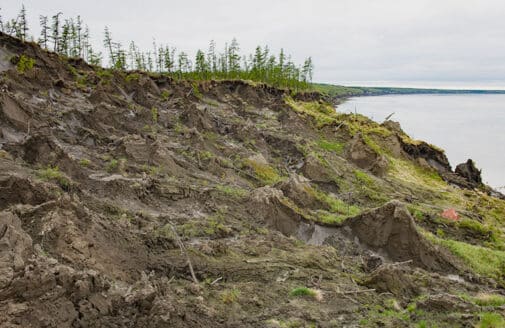
- In The News
Alaska permafrost put at risk by climate change
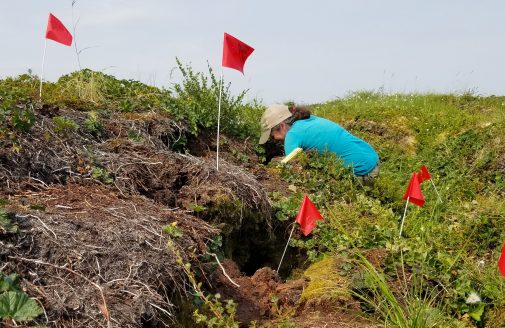
- In The News




